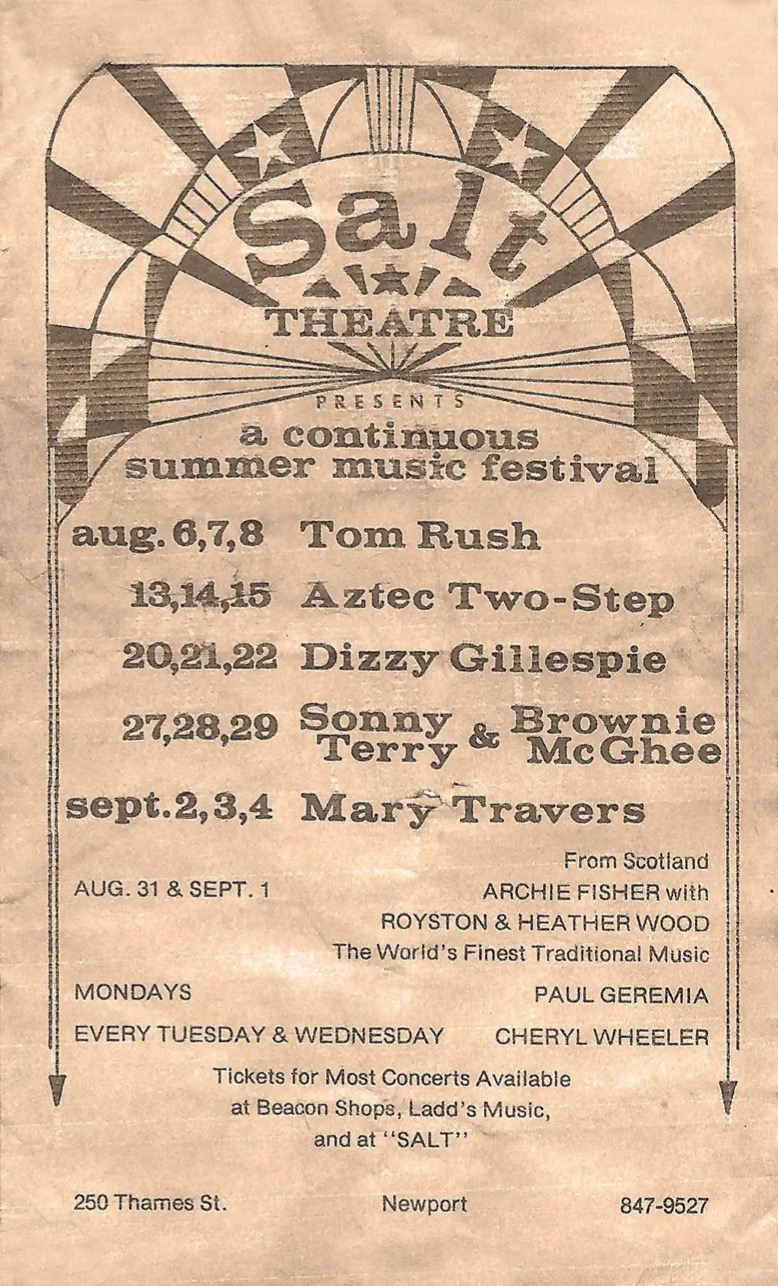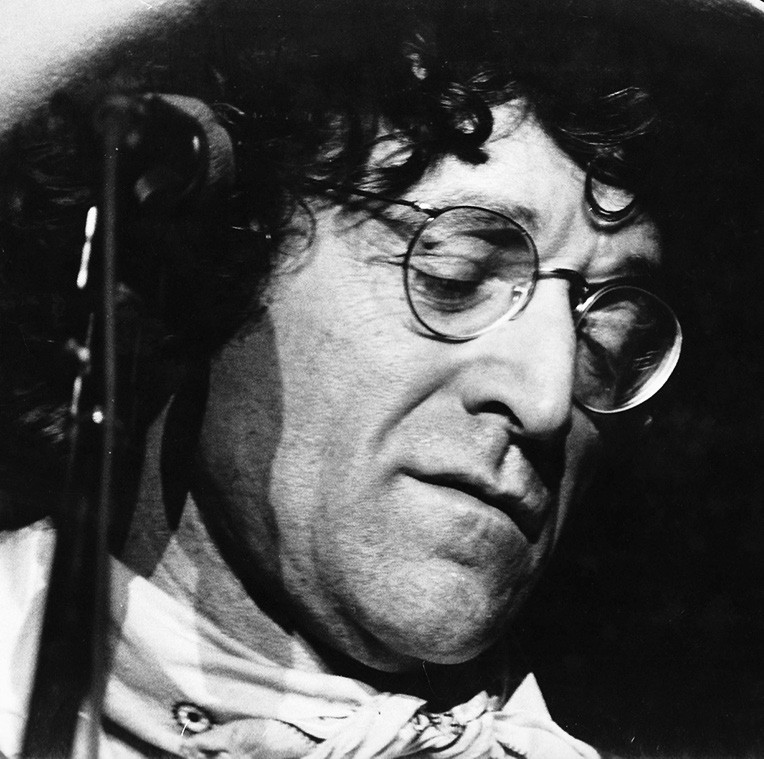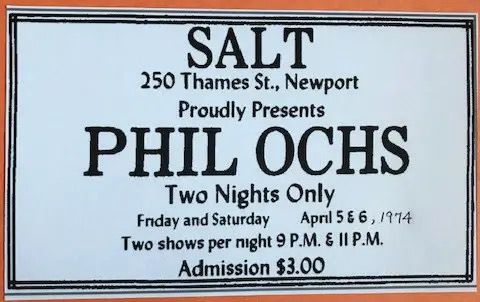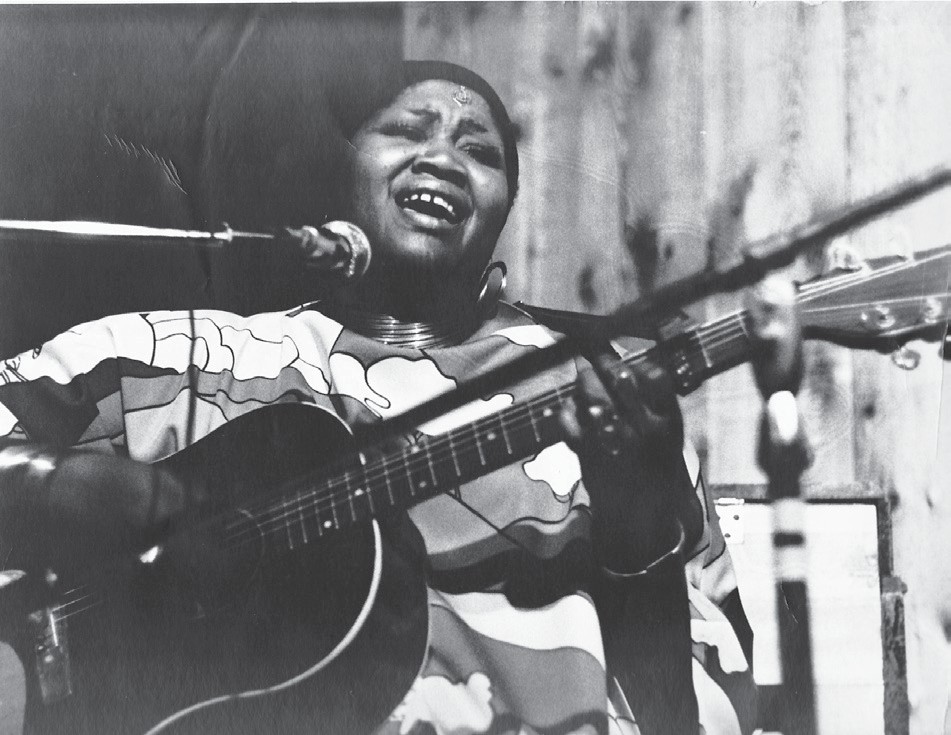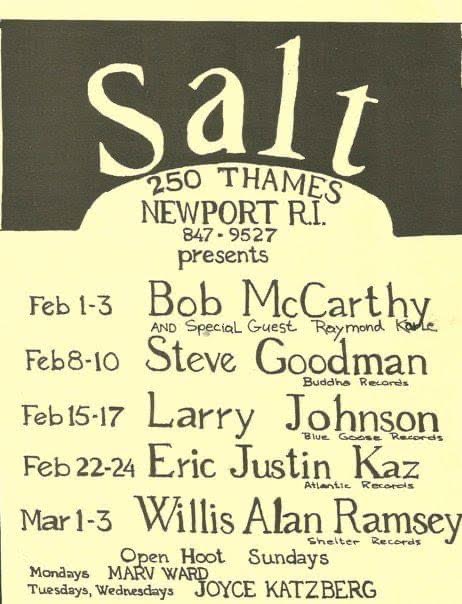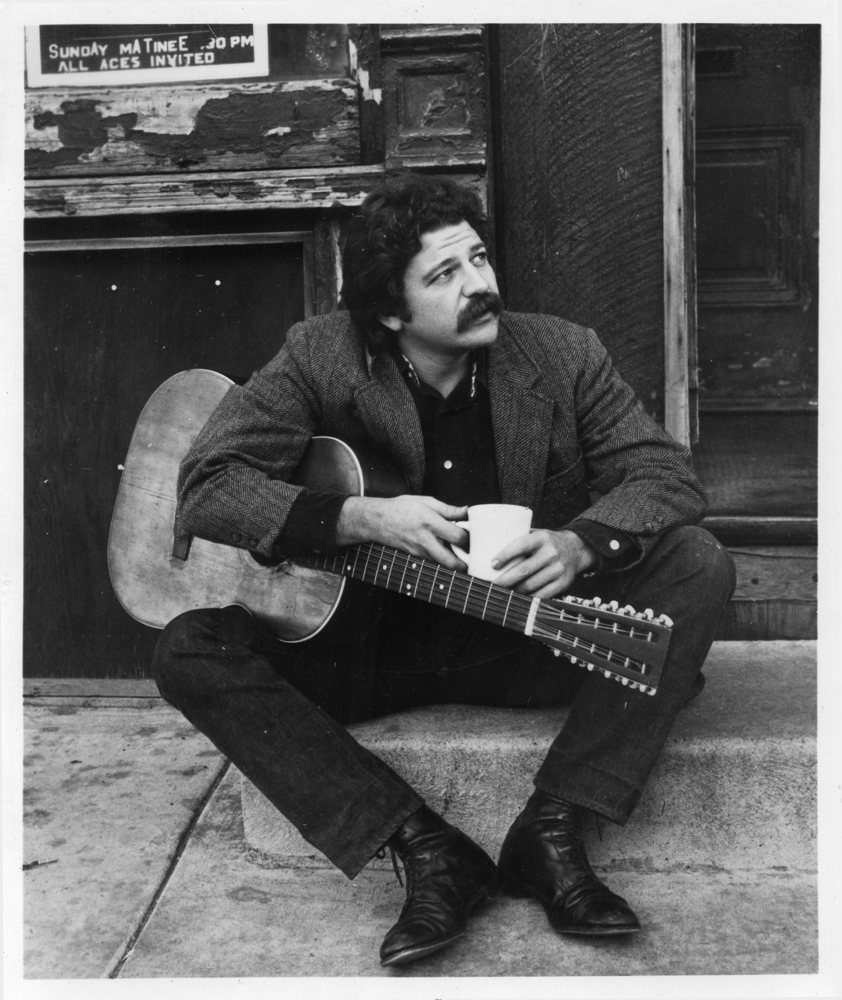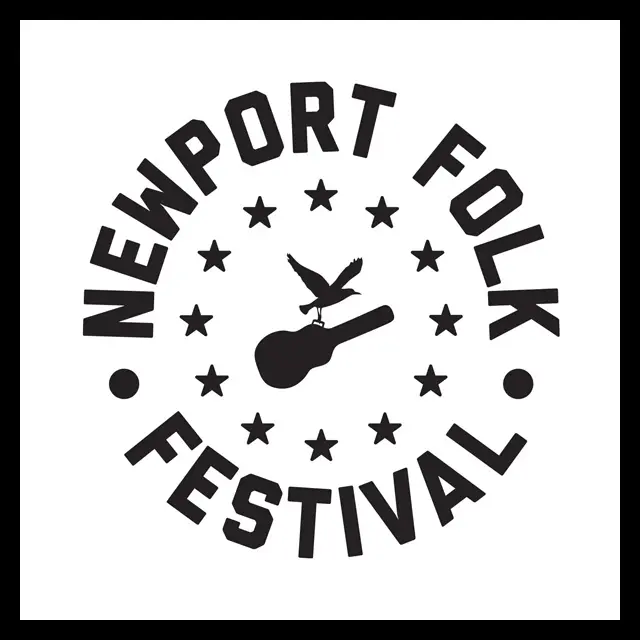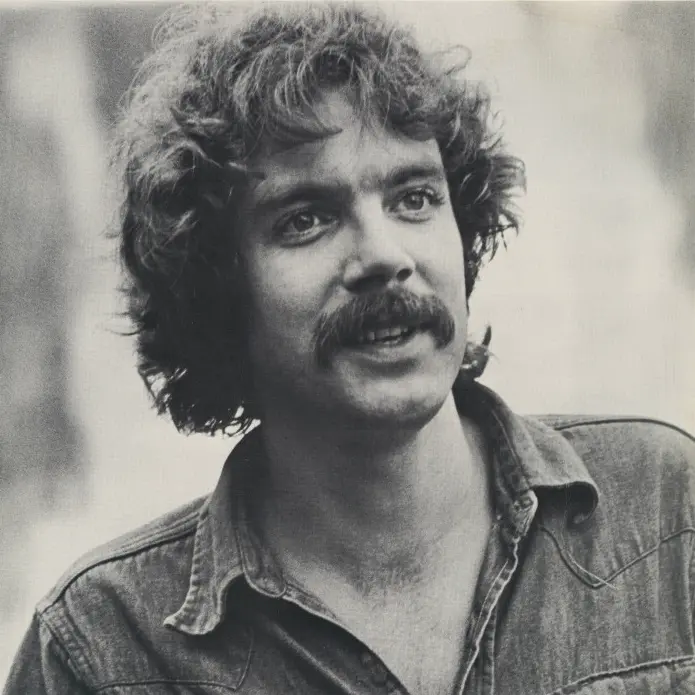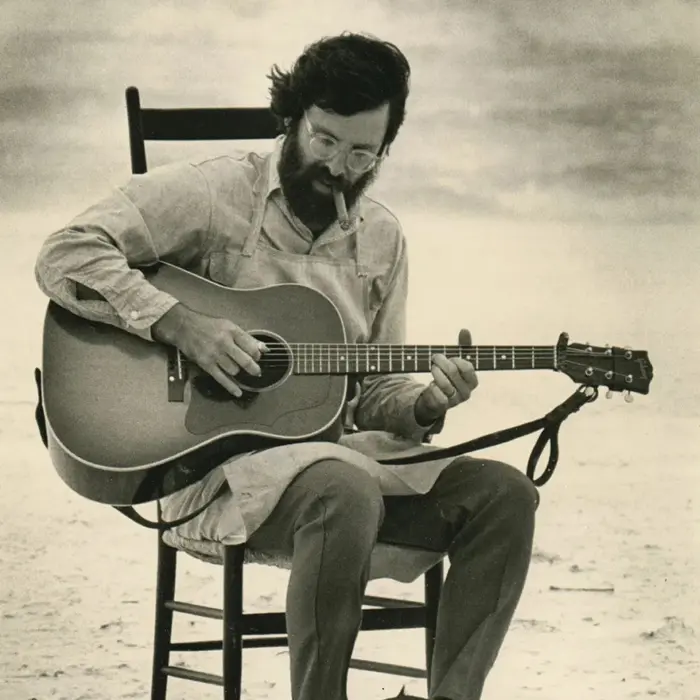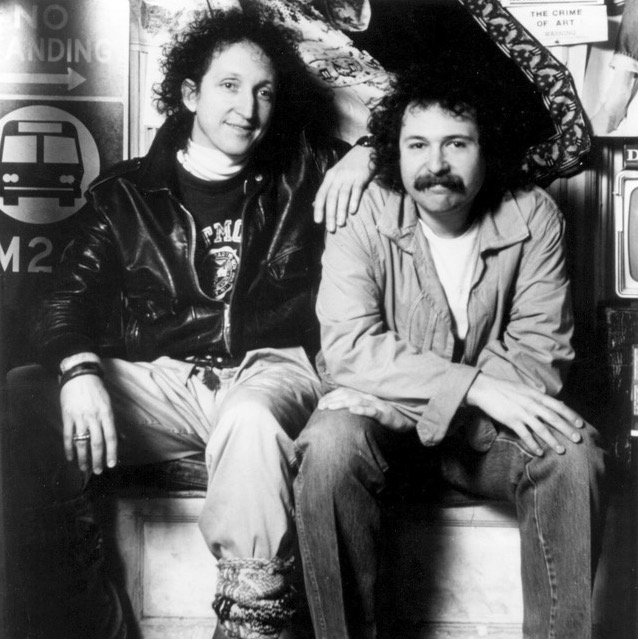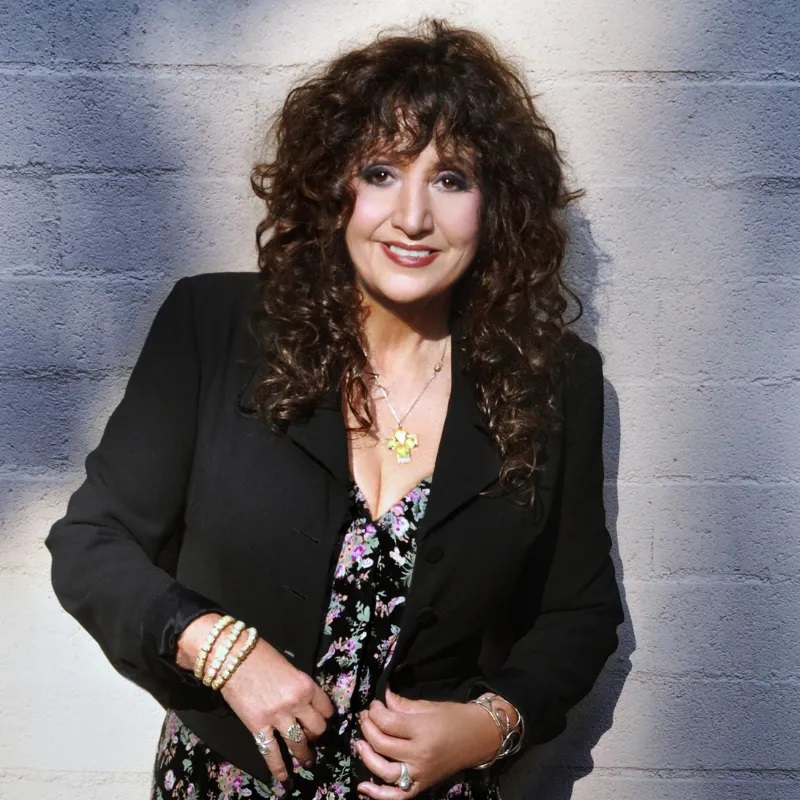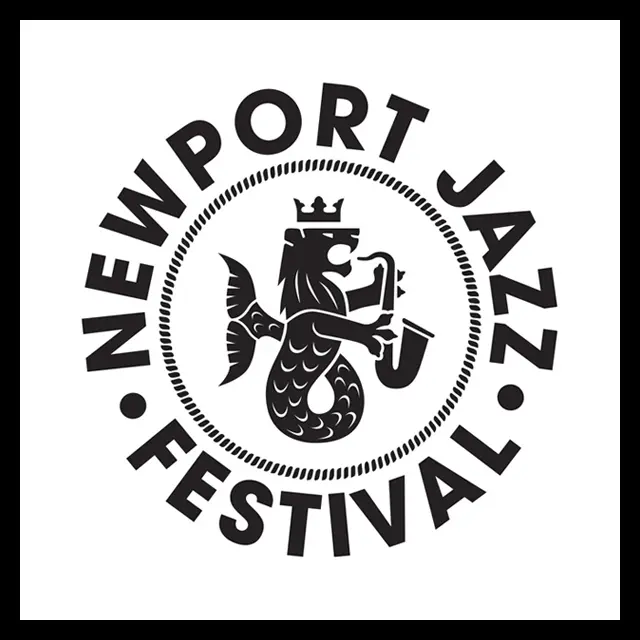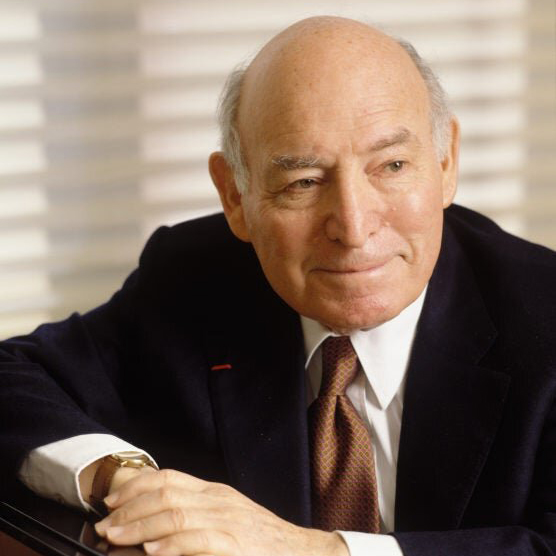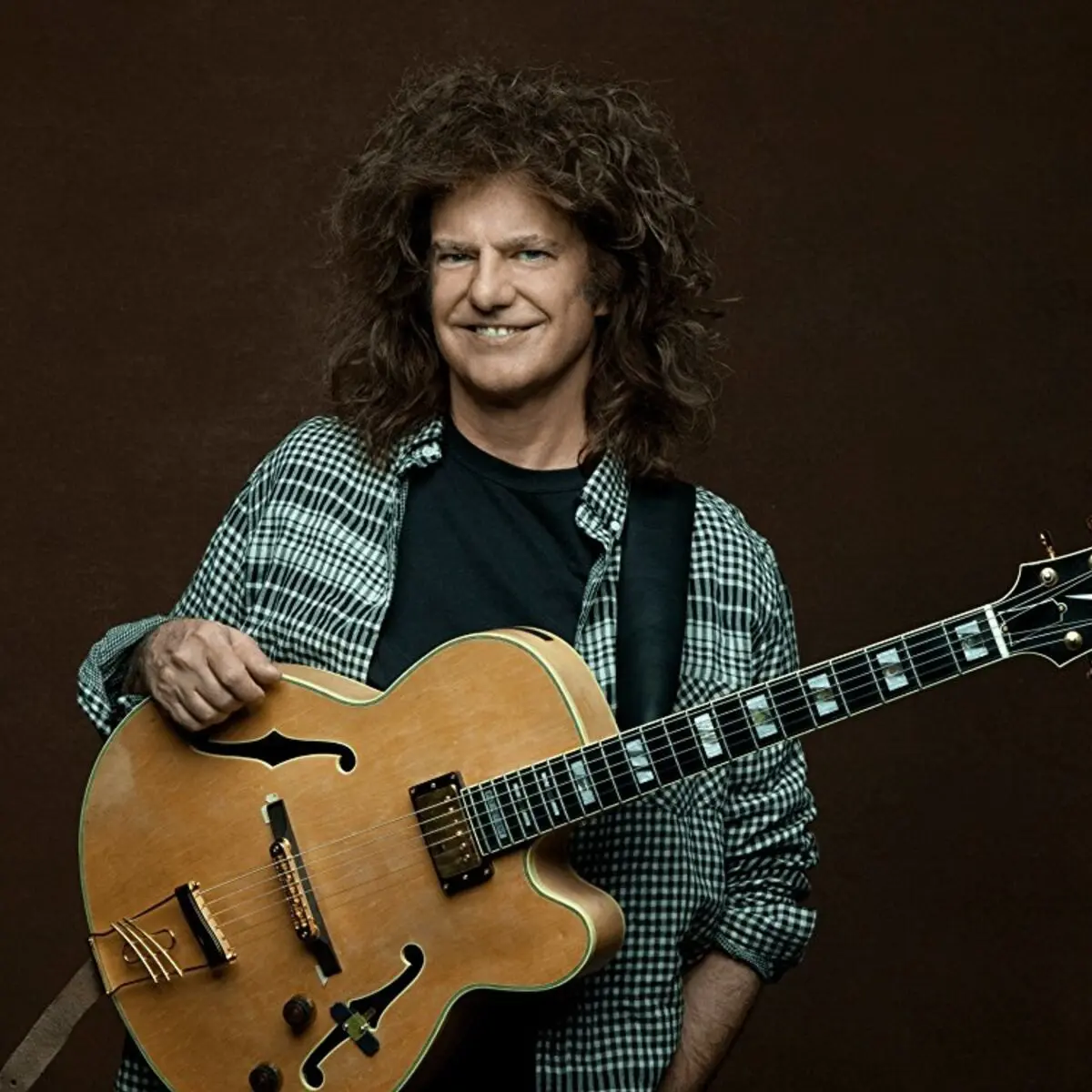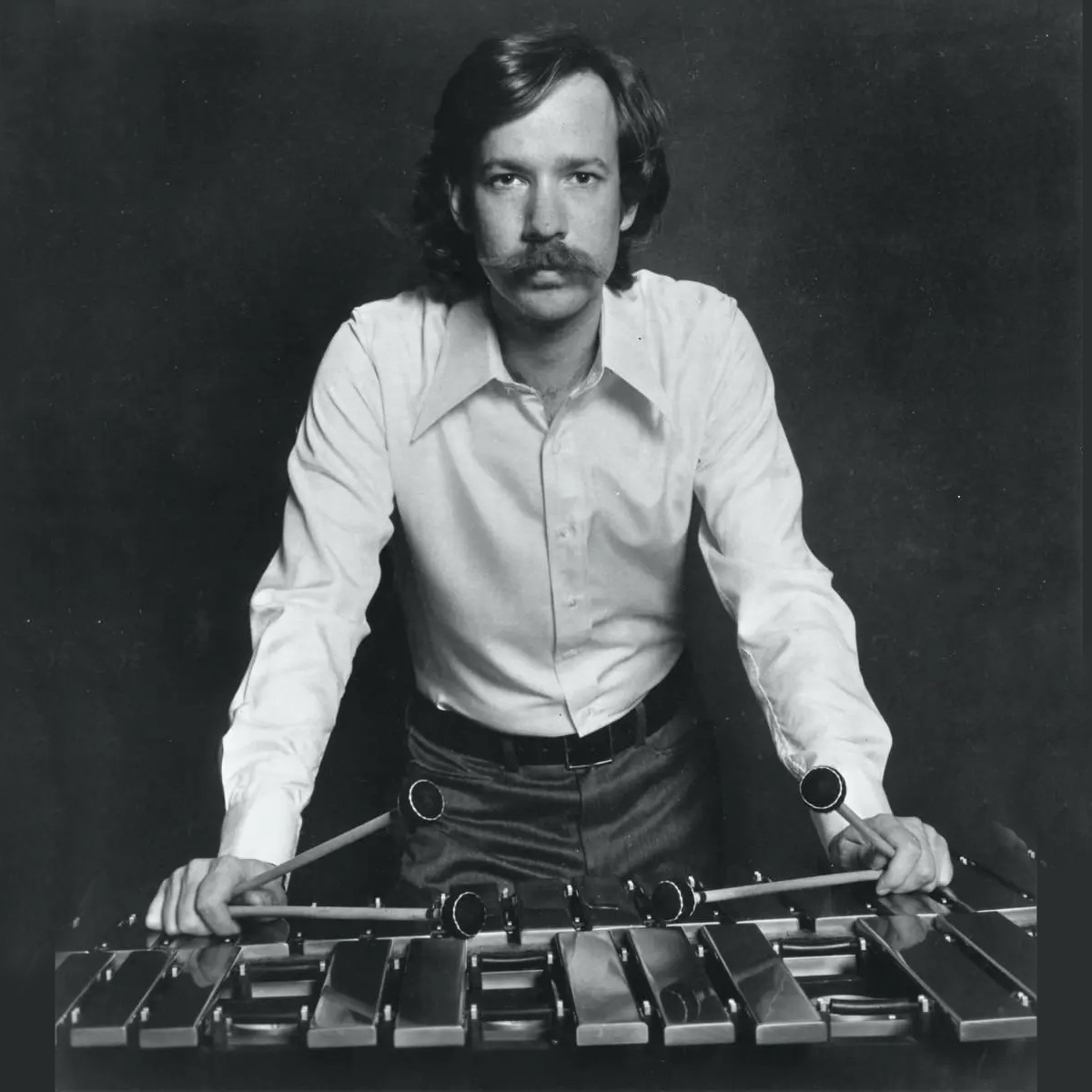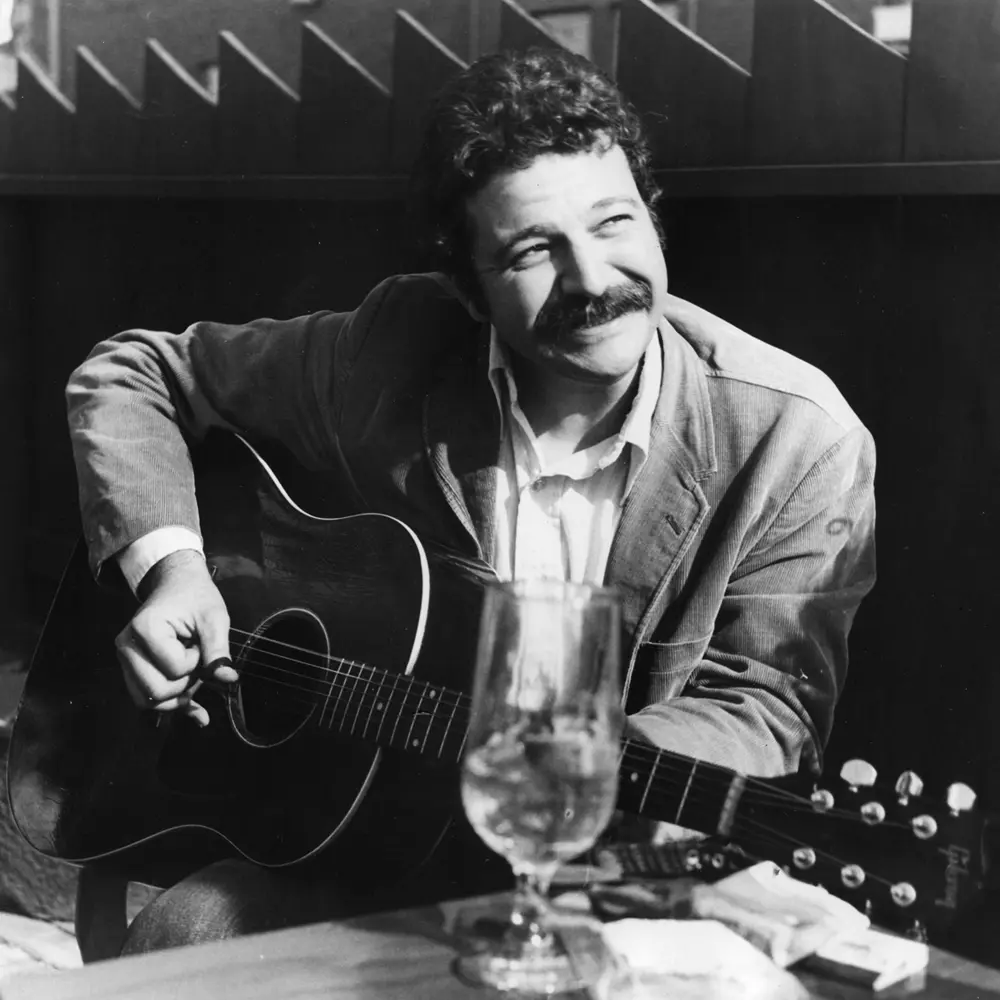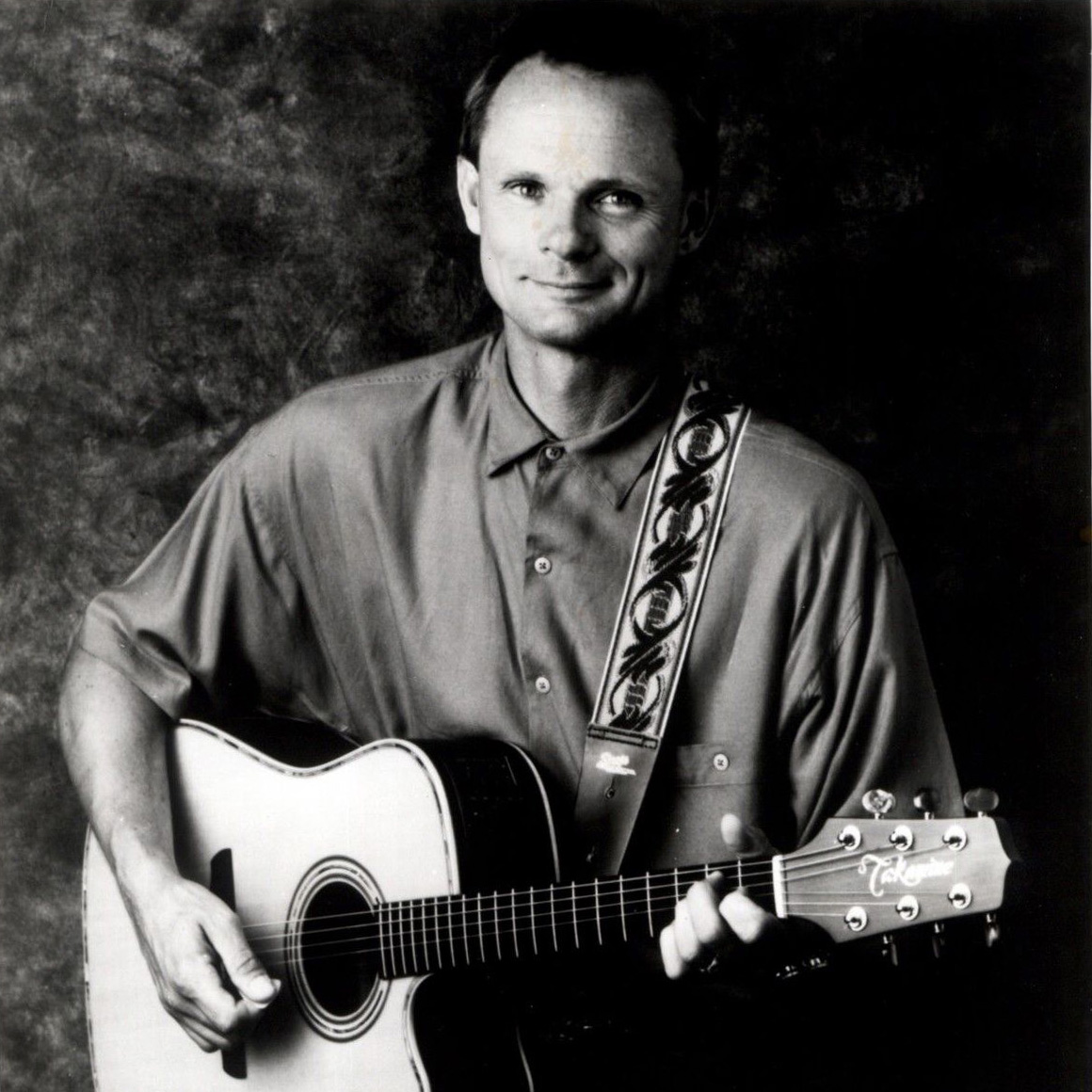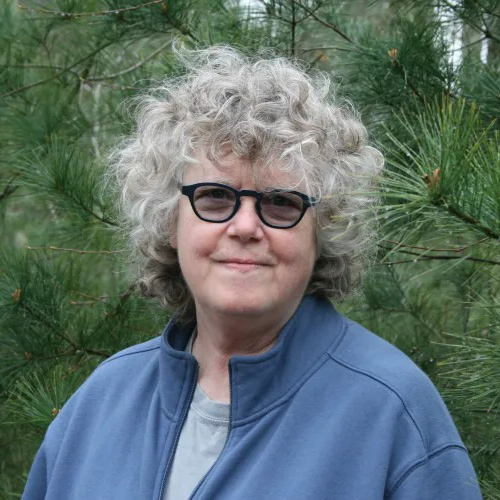Salt Theatre
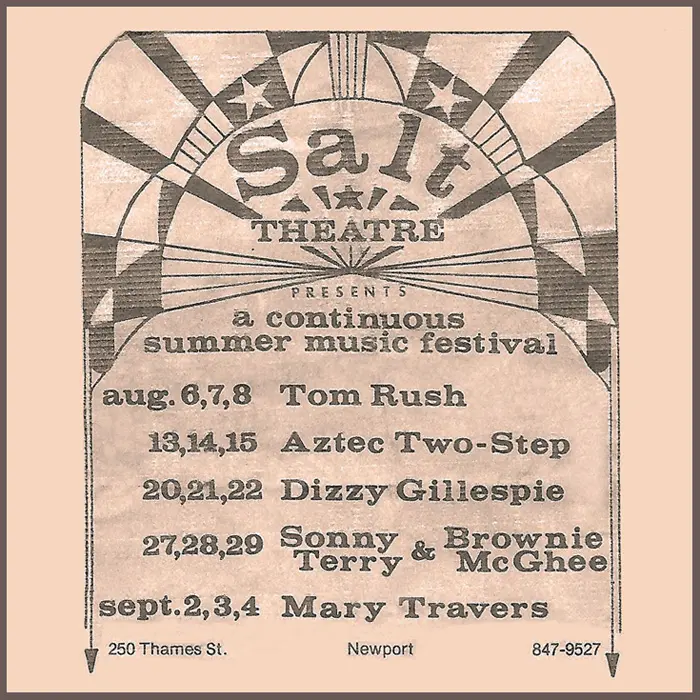
As optimists say, “When one door closes, another one opens.” And there’s no better proof of that adage than the story of Salt Theatre, a short-lived bar in Newport, Rhode Island, that opened its tiny door to a bevy of celebrated folk artists – some jazz, blues and pop ones, too – when the enormous doors of the Newport Folk Festival were closed.
An uplifting tale of entrepreneurial enthusiasm and sheer passion for music, Salt’s remarkable history is enough to make even the most pessimistic, the most jaded, the most downright negative among us think that maybe, just maybe, every dark cloud really does have a silver lining.
BACKGROUND, BEGINNINGS
First, some context: From 1970 until 1985, the Newport Folk Festival was not held due to financial difficulties and unresolved controversies over the Newport Jazz Festival, which started in 1954. The folk festival debuted in 1959, returned in 1960, was not held in 1961 and 1962, then ran annually from 1963 through 1969 and the majority of Newporters – not to mention folk musicians and fans from across New England and the greater US – had come to cherish the event, so its closing for 15 years was a blow to the regional and national folk scenes, to say the very least.
Now, Salt’s backstory, which is directly related to the musical void created when the famed folk festival was shuttered: In early 1972, Tom Prentiss, a Harvard law student and part-time bartender at a Cambridge pub, was approached by a beer distributor who asked if he’d be interested in taking ownership of a small bar on Thames Street in Newport since its current owner was months behind on his booze bill. Prentiss took him up on the offer and, with his friend Liam Keane as co-owner, put together as much capital as he could to renovate the run-down joint, hiring John Shehan as the venue’s manager.
NAME, EARLY ACTS, “THE RETURN OF THE NEWPORT FOLK FESTIVAL”
Later in 1972, after changing the bar’s name to Salt Theatre (based on the term “an old salt,” local slang for a sailor), for about a month Shehan and Keane booked local rock bands to play on weekends. Since those groups didn’t draw sizable crowds, they brought in a few Cambridge-based folk acts over the next several weekends, including Tom Rush and Eric von Schmidt, promoting the events as a folk series that would in some small way be a substitute for the globally renowned folk festival. When those shows packed the 200-seat bar, Prentiss and Keane decided that live folk music was the venue’s future.
Prentiss began posting flyers all over Rhode Island advertising Salt as “the return of the Newport Folk Festival” but soon renamed the promotion “A Festival of Folk Music” after being paid a visit by a man representing George Wein, founder and owner of the Newport Jazz and Newport Folk Festivals, who – in no uncertain terms – “corrected my thinking on the subject,” Prentiss told Newport Today in 2022.
NOTABLE APPEARANCES
Over the next six years, Salt hosted a who’s who of prominent folk singers and the eye-popping list includes Aztec Two-Step, Tim Hardin, Tom Paxton, Ramblin’ Jack Elliot, Odetta, Jesse Winchester, David Bromberg, Dave Van Ronk and Maria Muldaur, who in 1973 played the song “Midnight at the Oasis” live for the first time at Salt before including it on her debut album later that year, when it reached #6 in the Billboard Hot 100 and was nominated for the Song of the Year Grammy.
By the mid-1970s, folk wasn’t the only genre heard at Salt. Pop stars like Gene Clark and Roger McGuinn of The Byrds appeared, as did blues legend Muddy Waters – who did a four-night stand in August 1975 – jazz royalty Dizzy Gillespie, jazz-vibraphone pioneer Gary Burton and jazz-fusion giant Pat Metheny. In 1973, in shows coordinated by folk-blues troubadour Paul Geremia and other Rhode Island-based musicians, South Carolina-born bluesman Pink Anderson, the last-living medicine-show musician in the American South – who had never appeared in a nightclub or in front of a white audience – played a four-night stand, less than a year before his death.
Throughout its six-year existence, Salt served as a training ground for several musicians who went on to successful musical careers, including singer-songwriter Cheryl Wheeler, who moved to Rhode Island in 1976 at age 25 and played her first gigs at the 250 Thames Street venue, which led to her opening for Jonathan Edwards, Gordon Lightfoot and Mary Travers of Peter, Paul and Mary before becoming a headliner. Since 1985, Wheeler has recorded two EPS, eight studio albums and one live album, and some of her songs have been recorded by Bette Midler and Garth Brooks, among others. In 2014, she was inducted into the Rhode Island Music Hall of Fame.
CLOSING, COMMENTS ON SALT’S SUCCESS
In 1978, with the folk-music craze now a thing of the distant past and the Newport Folk Festival still shut down, Salt closed its tiny door for good. “We couldn’t afford to maintain the building,” according to Shehan. “Unless we brought in acts like Aztec Two-Step or Tom Rush every single weekend, we just couldn’t generate sufficient cash flow to heat the place and fix the roof when needed. It just couldn’t sustain itself.” Shehan is now the Building Committee Chair for the Newport Performing Arts Center and Salt co-founder Prentiss went on to run the Providence-based Prentiss Law Firm.
Asked how Salt became such an extraordinary musical hotspot, Prentiss credits some of the venue’s success to his lack of experience in the music business. “I was a pretty naive kid who, I learned, was sort of the polar opposite of the club owners with whom these artists typically dealt,” he said in 2022. “I was charged up with the idea of making Salt a real music place.”
“As I made calls following leads, I learned of more leads [to the] managers of some pretty famous people,” he continued. “After a while, they started calling me.”
(by D.S. Monahan)

